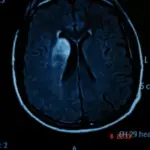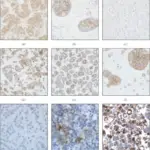Edema is the abnormal accumulation of fluid in certain tissues within the body.
What is the Pathology of Edema?
The pathology of edema is:
-Etiology: The cause of edema is an imbalance of hydrostatic or oncotic forces.
-Pathogenesis: The sequence of events that lead to edema is the increased movement of fluid from the intravascular to the interstitial space or decreased movement of water from the interstitium into the capillaries or lymphatic vessels.
-Morphology: The morphology associated with edema shows increased fluid attenuation, hydrothorax, hydropericardium, and ascites.
How does Edema Present?
Patients with edema typically are either male or female present in the age range of older adults. The symptoms, features, and clinical findings associated with edema include swelling of the affected area.
How is Edema Diagnosed?
Edema is typically diagnosed by physical exam. Additional tests, such as chest X-ray, abdominal ultrasound, ultrasound of the legs, blood tests of liver function, urinalysis, and evaluation of the patient’s kidney and liver function may be considered.
How is Edema Treated?
Edema is typically treated with fluid management, diuretics, and dietary changes.
What is the Prognosis of Edema?
The prognosis of edema is good in most cases. Patients with congestive heart failure, or liver issues may have worse prognosis.



